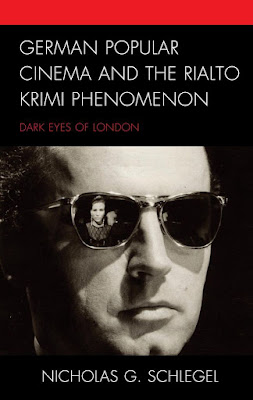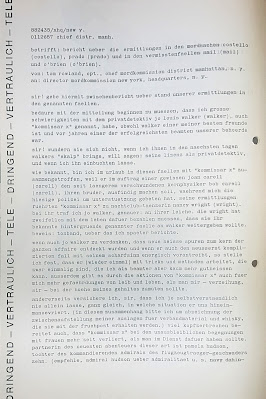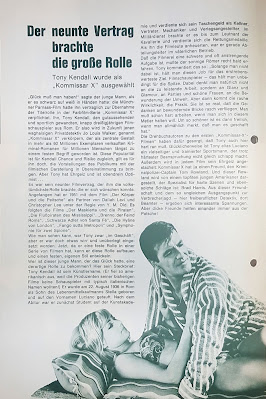International Adventures is again an academic book so it’s not necessarily easy reading but it rewards the patient reader with a plethora of otherwise hard to obtain info.
It also generally doesn’t come cheaply though I managed to get my copy for a measly tenner during a special promotion on Book Depository so it may be worth setting up an alert for other similar promotions. (At the time of writing though it still can be obtained fairly cheaply... at least for my neck of the woods.)
Though the main focus is on the 1960s, the book also provides a wealth of info on the German film industry in the decades before and after, specifically the 1950s and 1970s.
In contrast to a lot of other film books, this work is not so much about the creation of individual films (i.e. directors, stars or individual reviews) but on film as a business. As such this book has a much bigger slant on the big business of production and distribution companies as well as their marketing and general societal shifts and sociological acceptance of film as a product.
One of biggest insights is how little Hollywood was of importance to German cinema goers up until the 1970s. Despite being faced with a potential avalanche of US productions after the end of WW2, Hollywood movies only on occasion featured in the Top 10 of the top grossing films each year.
Instead the (West) German audience favoured homegrown or European productions or even older German movies that were being re-released. Even the most popular stars then were rarely American but usually German or European.
Following an initial phase of more depressing Trümmerfilme (rubble films), more similar in line to Italian Neo Realism, the audience demanded more carefree entertainment to help them forget about their troubles so after an initial reluctance to support a new German movie industry, the Allies started granting permissions to build that industry back up from scratch, often with the assistance of de-nazified talents from the Hitler era or German writers and directors that had emigrated to Hollywood during the Third Reich and now gradually returned home.
One popular genre during the 1950s were the Heimatfilme (often saccharine weepies set in German and Austrian mountain ranges). It was often symptomatic that the most successful productions were set abroad or in past times. This was gradually helped by a complex system of European co-productions that ensured that the films could be produced at higher budgets and be guaranteed to also sell abroad. Looking at a lot of German films at the time, it does appear that Germany may not have welcomed US movies that much but instead still celebrated a newfound cosmopolitanism regardless as displayed in the settings the films are based in and the stars featured there.
The high time of those co-productions was during the 1960s and the author makes a very poignant claim that even ostensibly “German” films and series could not have been possible without this newfound cosmopolitan mindset.
A case in point are indeed the Krimis. The Rialto series of 32 Edgar Wallace productions e.g. started off as Danish-German co-productions and ended up as Italo-German Giallo/Krimi hybrids and in between also saw mutual deals with French and English companies.
And needless to say their plots were also not based in Germany but in an imaginary England full of clichéd but sympathetic aristocratic and eccentric characters, based on the works of an author who had long since fallen out of favour in his home country but had still remained popular in Germany.
Other similar productions would include the Mabuse, Jerry Cotton or Kommissar X movies.
International Adventures features a lot of detail on the main business people behind distribution companies like Gloria (Ilse Kubaschewski) and Constantin as well as production companies such as Rialto (Horst Wendlandt) and CCC (Artur “Atze” Brauner) and even dives into some of the later bargain basement producers such as Wolf C. Hartwig’s Rapid.
The author even makes a highly unusual but valid point that Harry Alan Towers’ co-productions may even count as “German” genre films given their often significant financial and talent involvement from there and as some of his movies were released much earlier in Germany than in the UK.
He also highlights that Krimis and other German popular cinema usually tends to be reviewed from a typical Hollywood B-movie perspective, yet in their home country these were the most successful mainstream productions at the time so the traditional Anglo-American division of A and B pictures is just not suitable when analysing those films.
All in all, a lot of food for thought in this book (this review really only covered the broad surface) and I for one will often return back to it.

















































